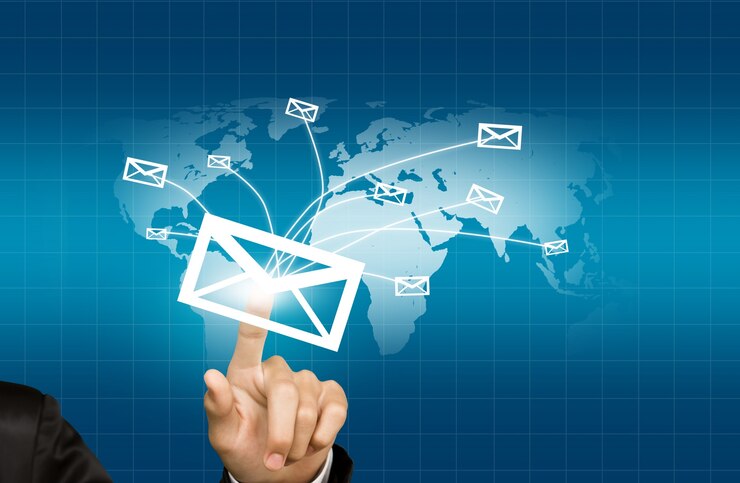
7 Proven Strategies for Effective Email Marketing That Converts
With so many communication channels available in the modern digital world, email marketing is still a mainstay in the toolbox of digital marketers. Email marketing has the potential to be an effective tool for nurturing leads, interacting with consumers, and increasing conversions when used effectively. However, it might be difficult to stand out and achieve conversion in the jungle of inboxes and changing consumer preferences. This is where a digital marketing agency steps in, aligning the entire email promotion process and producing meaningful outcomes.

How Does A Digital Marketing Agency Strategize Email Marketing Procedure?
To help you navigate the complexities of email marketing, here are seven proven strategies that can elevate your campaigns and drive tangible results.
-
Segmentation and Personalization:
One size fits all approach doesn’t cut it anymore. To truly resonate with your audience, segmentation and personalization are imperative. By dividing your email list into smaller, targeted segments based on demographics, behavior, or preferences, you can tailor your content to suit the specific needs and interests of each group. Addressing subscribers by their name and crafting personalized subject lines and content not only fosters a deeper connection but also significantly boosts engagement and conversion rates.
-
Compelling Content Creation:
Content is king, even in the realm of email marketing. Your emails should offer value to your subscribers, whether it’s in the form of informative articles, entertaining stories, exclusive offers, or helpful tips. Strive to create content and a content marketing plan that is relevant, timely, and resonates with your audience’s interests and pain points. Incorporating visually appealing elements such as images, videos, and infographics can also enhance engagement and make your emails more memorable.
-
Clear Call-to-Actions (CTAs):
Every email you send should have a clear and compelling call-to-action (CTA) that prompts the recipient to take the desired action, whether it’s making a purchase, signing up for a webinar, or downloading a resource. Make your CTAs prominent, concise, and action-oriented, using persuasive language that encourages immediate action. Experiment with different placement, colors, and wording to optimize your CTAs for maximum click-through and conversion rates. Moreover AI-driven digital strategies and procedures has made content more appealing with CTAs
-
Responsive Design and Mobile Optimization:
With the majority of emails being opened on mobile devices, ensuring that your emails are optimized for mobile is non-negotiable. Invest in responsive design that automatically adjusts the layout and formatting of your emails to suit different screen sizes and devices. Keep your email templates clean, concise, and visually appealing, with large, tappable buttons and minimal scrolling required. A seamless mobile experience not only enhances user experience but also maximizes the likelihood of conversion.
-
A/B Testing and Optimization:
The key to continual improvement in email marketing lies in experimentation and optimization. Utilize A/B testing to compare different elements of your emails, such as subject lines, content, CTAs, and send times, to determine what resonates best with your audience. Analyze the results of your tests and iterate accordingly, refining your approach over time to maximize engagement and conversion rates. Remember, even small tweaks can yield significant improvements in performance.

-
Automation and Drip Campaigns:
Automation is a game-changer in email marketing, allowing you to deliver the right message to the right person at the right time, automatically. Implement drip campaigns to nurture leads through the sales funnel, delivering a series of targeted emails based on predefined triggers or actions. Whether it’s welcoming new subscribers, re-engaging inactive users, or following up on purchases, automation streamlines the process and ensures consistent communication with your audience. AI is transforming the digital marketing game and design email campaigns that convert.
-
Analytics and Performance Tracking:
To truly understand the effectiveness of your email marketing efforts, you need to track and analyze key metrics. Monitor metrics such as open rates, click-through rates, conversion rates, and unsubscribe rates to gauge the performance of your campaigns. Leverage analytics tools to gain insights into subscriber behavior, preferences, and trends, enabling you to refine your strategy and optimize future campaigns for better results.
In conclusion, effective email marketing requires a strategic approach that combines segmentation, personalization, compelling content, clear CTAs, mobile optimization, testing, automation, and analytics. By implementing these proven strategies, digital marketing agencies can create engaging, relevant, and impactful email campaigns that drive conversions and deliver tangible results for their clients.
Remember, success in email marketing is not just about sending emails, but about building relationships and delivering value to your subscribers consistently. As a digital marketing agency, incorporating these strategies into your email marketing efforts can help you stand out in a crowded inbox and achieve your conversion goals effectively. Embrace experimentation, stay abreast of industry trends, and always prioritize delivering value to your subscribers, and you’ll be well on your way to email marketing success.